‘Everything but the paycheck goes up.’ How Miami-area nonprofits are bolstering safety net
During the pandemic, the lines of cars that stretched for blocks and blocks outside food distribution centers were one of the most visible signs that many South Florida residents were suffering and had spiraling economic needs.
While the pandemic has ebbed, it doesn’t mean that people in the community aren’t still facing pressing problems.
“The acute risks from COVID have indeed subsided, but the ripple effects are still deeply impacting our communities. Over the last few years, the cost of living has spiked in Miami, leaving a huge number of locals spending most of their income just to stay afloat,” said Rebecca Fishman Lipsey, president and chief executive of The Miami Foundation.
A perfect storm of economic challenges — everything from an affordable housing crisis to high prices for food, fuel and insurance to high interest rates and the lingering impact of hurricanes and other natural disasters — has meant that too many South Florida residents are just hanging on.
While many South Floridians have been called back to their jobs, incomes are relatively flat. Some jobs just went away when businesses failed during the pandemic.
Paco Vélez, chief executive of Feeding South Florida, said little has changed in terms of need. The organization collects, purchases, and distributes tens of millions of pounds of food annually for those facing food insecurity. It is the largest provider of emergency food assistance in Miami-Dade, Broward, Monroe and Palm Beach counties.
“The pandemic kicked off a lot of subsequent hits for families,” he said. “Once people got back to work, we got hit with increased fuel and food prices. The cost of cleaning supplies went up; there were supply chain issues. Then bird flu caused the price of eggs and poultry to skyrocket. It was just non-stop hit after hit and things have gotten out of the affordability of many families.
“Unfortunately, wages are not increasing enough to keep up with everything else,” Vélez added.
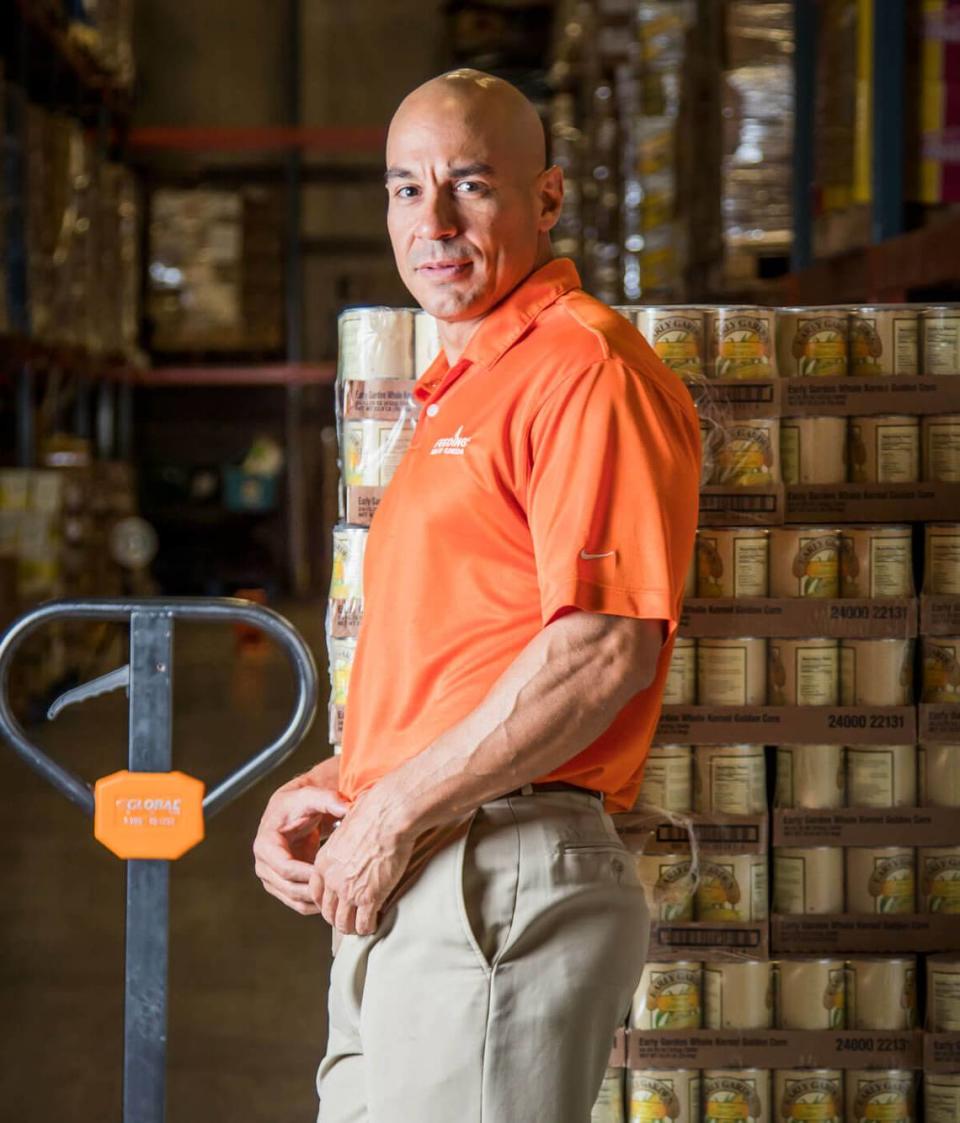
During the height of the pandemic in fiscal years 2020 and 2021, Feeding South Florida distributed 172.6 million and 154.08 million pounds of food, respectively. In fiscal 2023, it distributed less than half that amount or 71.9 million pounds of food.
Lower food distribution numbers unfortunately don’t reflect diminishing needs, said Vélez. “More people are coming to us and coming with more frequency. We’re not seeing a lull. Our families are continuing to struggle more and more.”
The lower numbers are a product of a decrease in both monetary and food donations to Feeding South Florida, the end of COVID-related government safety net programs, and higher costs, which mean the organization can’t buy as much food to distribute, Vélez said.
High cost of housing
Now there are more working families, some making $60,000 or $70,000 a year, who need food assistance, he said. “When the insurance goes up on your car and your home and you’re paying more for rent or a mortgage, you’ve got to cut somewhere because you’ve got to keep a roof over your head and you need a car to get to work. A lot of times, the first thing to go is food,” said Vélez.
“It’s hard to make ends meet in the tri-county area,” said Ken H. Johnson, a real estate economist at Florida Atlantic University. “The extra cost of housing has simply eaten up the margin” people once had for food and other purchases, he said. “We’re definitely back in the grips of another housing crisis both from a home ownership perspective and on the rental side.”
Nine Florida housing markets, including Miami, were among the 20 most overvalued metropolitan areas in the United States, according to the Top 100 U.S Housing Markets, a survey that’s a collaboration of FAU’s College of Business and Florida International University.
Cape Coral was the most overvalued housing market in the United States with buyers paying a 47.99 percent premium for a typical home. That means a home that would have been expected to cost $271,013 based on historical home price data cost $401,063 in Cape Coral. Miami homes were selling at a 36.74 percent premium — 14th highest in the country, according to August data compiled by the FAU and FIU researchers.
“The cost of housing is just very high relative to our incomes in Florida,” said Johnson.
And the picture isn’t any better when it comes to rentals.
With rent averaging $2,794.50 monthly in September, the Miami market ranked ninth among the 100 largest metropolitan areas in the country in terms of lack of affordability, according to a rental index compiled by researchers at FAU, Florida Gulf Coast University, and the University of Alabama.
They found that a Miami household would need to earn nearly $112,000 annually to afford a typical rental unit and not be considered “house poor.” They define “house poor” as a household spending 30 percent or more of annual income on rent, making it difficult to save and pay bills for food, clothing, transportation, insurance, and medical care, said Johnson.
“This ($112,000) is a really big number and highlights how high housing prices are in Southeast Florida,” said Johnson. As Florida continues to receive a high influx of new residents and with new household formation increasing, there’s a mismatch between supply and demand and just not enough housing to go around, he said.
“The demand doesn’t seem to be abating and it takes time for supply to catch up,” said Sean Snaith, director of the University of Central Florida’s Institute for Economic Forecasting. In his latest quarterly Florida forecast, Snaith said that housing starts in Florida have “felt the bitter chill of higher mortgage rates.” Total starts, which were 192,213 in 2022, are expected to fall to 183,134 this year and to 158,716 in 2024, according to the forecast.
“What will solve this is building more and more units over time as incomes rise,” said Johnson, “but I think we’ll be in this affordability crisis for a few more years.” Although housing costs in some other areas of the country have been tapering off, median home prices and rents are still going up in the Miami metro area – although at a slower rate, said Johnson.
Nonprofits work to ease housing costs
Meanwhile, some Florida nonprofits are getting creative to ease the burden of high housing costs.
In 2024, for example, Oolite Arts (formerly Art Center/ South Florida), a Miami arts organization will begin paying a $1,000 a month housing stipend to artists enrolled in its program that provides free studio space. A $1.25 million grant from The John S. and James L.. Knight Foundation is being used to fund the housing stipend and other Oolite initiatives.
Twelve artists at a time are enrolled in the two-year studio residency program and will be receiving the housing stipend. With housing costs so high, artists in search of more affordable housing have had to commute long distances to their studios, double up with roommates or work extra jobs to make ends meet.
“This will alleviate some of the burden on our artists. It’s a gesture that acknowledges the crisis our artists are facing,” said Esther Park, Oolite vice president of programming.
For Liene Bosque, a visual artist and sculptor, it will mean she may be able to cut back on her three jobs teaching art. “It means I can continue to be an artist. With the three freelance jobs I’ve barely been making art.
“The stipend program will be a great opportunity to spend more time in the studio and not to hustle my jobs as much,” said Bosque, who lives in Miami’s Silver Bluff area and has a four-year-old son.
Ironically, Bosque moved to Miami from New York five years ago in search of more affordability.
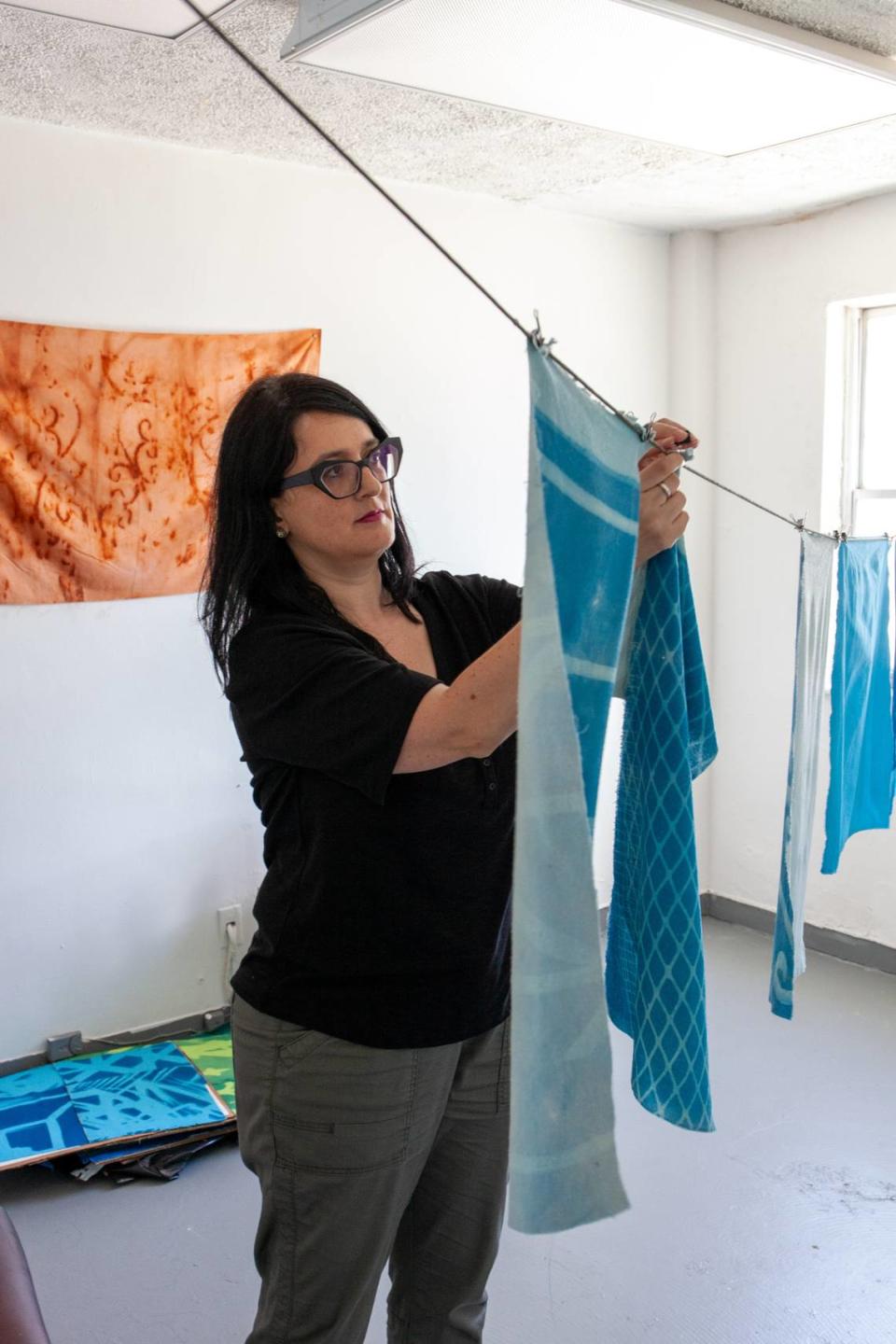
Park acknowledges that getting funding for the arts is a challenge in a community where there are so many pressing needs. But she said art – whether it’s listening to music or looking at a painting – is “what helps us get through our day.”
Jahshon Jones, the single father of two girls, said that a rental assistance program funded by the Fort Lauderdale Community Development Corp. has meant the difference between being on the verge of homelessness and being able to provide a stable home for his two daughters.
He has full custody of 8-year-old Taylor, and his younger daughter Melodie, 4, visits him every other weekend.
“I was literally a week from homelessness when I got an email about a 3-1 home in Fort Lauderdale for $1,300 a month. I thought there must be something wrong with this [price] but I hurried up to put in the application,” said Jones. “If I hadn’t found the CDC, I don’t know where I would be right now, maybe on a family member’s couch or living in my truck.”
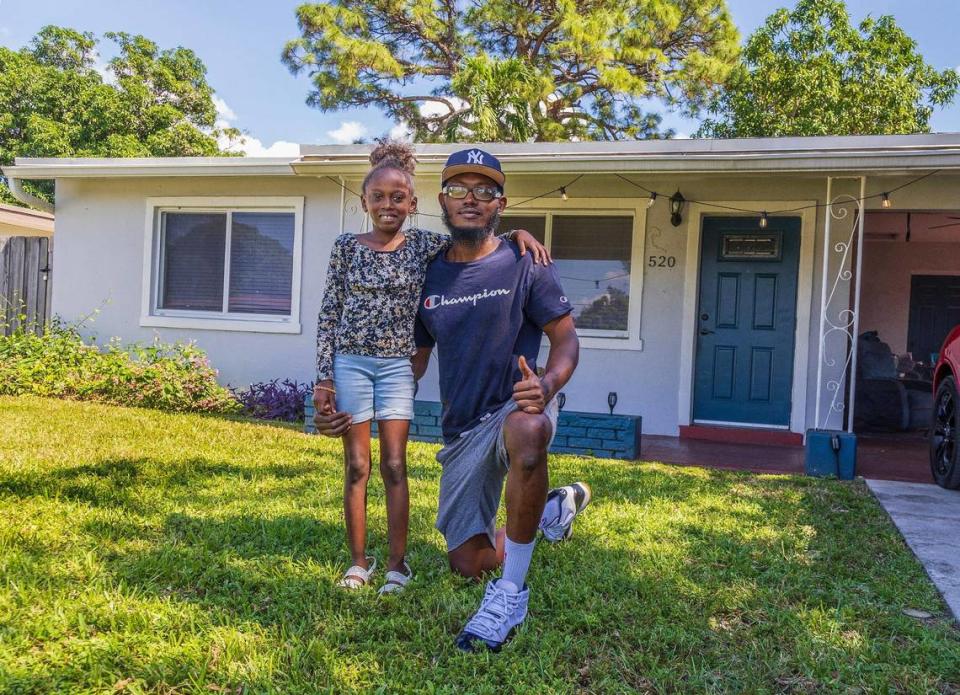
The home is owned by the CDC, which builds and rehabs homes for low-income people as well as provides subsidized rentals. If Jones’ home was being rented at market rates it might cost $2,400 to $3,200 a month, said Joe Toliver, executive director of the Fort Lauderdale CDC.
“These days everything but the paycheck goes up,” said Jones, a plumber who works six days a week to take care of his girls’ expenses and give them a little extra.
His subsidized rent means he can now afford the $126 a month it costs to send Taylor to a musical theater program. “She’s talented,” said the proud dad. “I wanted to expose her to this opportunity. I want to do right by my daughters.”
But the house has brought other changes to the family’s life. “This is my first time living in a single-family home and it has made me put my big boy pants on. It made me look at things differently,” said Jones.
He’s quit smoking and started to think about financial steps he needs to take to own his own home someday. He’s installed LED lightbulbs in his rental to save money, put a trampoline in the backyard for the girls and maintains the house as if it were his own.
“I would love to be a homeowner someday. The girls would see their daddy going to work every day and coming back to a home that we own,” said Jones. “I didn’t have the greatest start in life, but I want to give a good start to my daughters.”
In many ways, South Florida is living a tale of two economies – one that is bringing in affluent newcomers and new high-tech companies and another that’s become increasingly unaffordable for people who were already living here and providing important services, said Symeria T. Hudson, the president and chief executive of United Way Miami.

Of 1 million households in Miami-Dade County, almost 50 percent are unable to fully cover their basic needs, Hudson said. They are the so-called ALICE population – asset limited, income constrained, employed. Though they have jobs and earn above the Federal Poverty Level, they are just one emergency away from poverty.
While providing more affordable housing is a critical need for the community, Hudson said, it will take time. “In the near term what we can try to do is improve economic mobility through increased salaries,” she said.
After a successful pilot program, last summer United Way Miami relaunched UpSkill Miami, a workforce development fund designed to train those making $35,000 or less annually for employment in high-demand, low-supply jobs.
Not only do participants receive scholarships for training in fields such as healthcare and truck driving but UpSkill has partnered with community employers to give trainees access to new jobs when their programs are complete. Hudson said United Way also is in talks with employers in the construction industry to expand the UpSkill initiative to that sector.
Among United Way’s UpSkill partners are Miami Dade College, Baptist Health, Jackson Health System, and United HomeCare.
Over the next 12 months, Hudson said, the program is expected to help 500 local people land better-paying jobs.
“We need to get people ready for the future economy of Miami-Dade County,” Hudson said. “We see [UpSkill Miami] as a game changer.” Not only does the program put participants on a path for their own economic growth, she said, but it also has a multiplier effect because people stay in the community and contribute to the economy.
Feeding South Florida also sees its mission as “moving people from a place of dependency and needing assistance to a place of self-sufficiency,” said Vélez, and it has started both culinary and warehouse skills training programs. Some graduates end up working for Feeding South Florida while others have landed jobs at Publix Super Markets and other companies.
Nineteen-year-old Clement Morris joined the warehouse training program soon after he graduated from Hallandale High in 2022. He was offered a job at Feeding South Florida’s Pembroke Park warehouse before he even finished his program, he said.
Growing up in the Bahamas with a single mother and two siblings, Morris knew what it was like not to have enough to eat. “It wasn’t easy. We all went hungry sometimes until someone in the family could get some money and work,” he said.
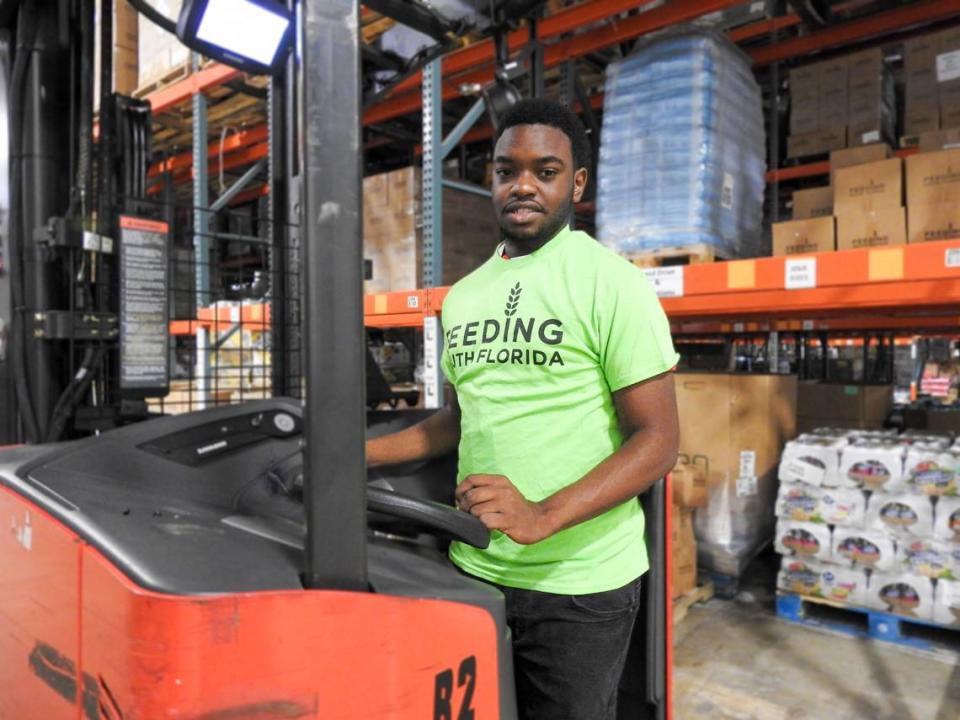
But things got worse when Hurricane Dorian, a Category 5 storm, hit the Bahamas on Aug. 27, 2019. There was widespread devastation in Freeport where his family lived; schools were closed. The youngster asked if he could go live with Elva Grant, his mother’s godmother, in the United States.
Since he left the Bahamas at age 15, a lot has changed. Grant has become his adopted mother, he’s earning $15 an hour driving a forklift and doing other warehouse duties, and this past summer he had saved enough money to buy a 2021 Honda Accord Sport.
Before he bought the car, he bicycled to work. “The car has been a huge help,” he said, “because sometimes I would get caught up in the rain.”
He’s now more optimistic about his future. “I always wanted to work because every dollar matters,” Morris said. “I like improving my skills.”
Added to Florida’s economic challenges are hurricanes, floods, and other natural calamities.
South Florida has been spared so far this hurricane season, but Southwest Florida, which was slammed by Hurricane Ian last year, is still struggling to recover and rebuild.
Jimmy Driggers, a Pine Island shrimper, and his wife Shirley are still living in a donated camper on the lot where Ian destroyed their home. They brought in $8,000 worth of fill after Ian so they could comply with codes requiring homes in their low-lying area to be elevated.
But that was only one of their challenges. They had insurance but found it didn’t stretch far enough for a new home. When they inquired about a mortgage, they were told they would have to show two years of solid income. Their shrimp boat, the Miz Shirley, was homeported in Fort Myers Beach and was half in the water and half slammed up against a seawall after Ian. Getting the boat repaired and back into the water took four months – four months without income.
Margins are tight in the shrimp business, so the couple hit on a novel strategy to keep more money in their pockets and save money for a new house while keeping their boat shrimping.
They hired a captain and crew to take out the Miz Shirley while they set up a mobile shrimp stand, Miz Shirley’s Shrimp Shack, where they sell their Key West pink shrimp by the side of the road. They haul the stand all along the Gulf Coast – Estero, Punta Gorda, Cape Coral, Port Charlotte – and post their daily schedule on Facebook.
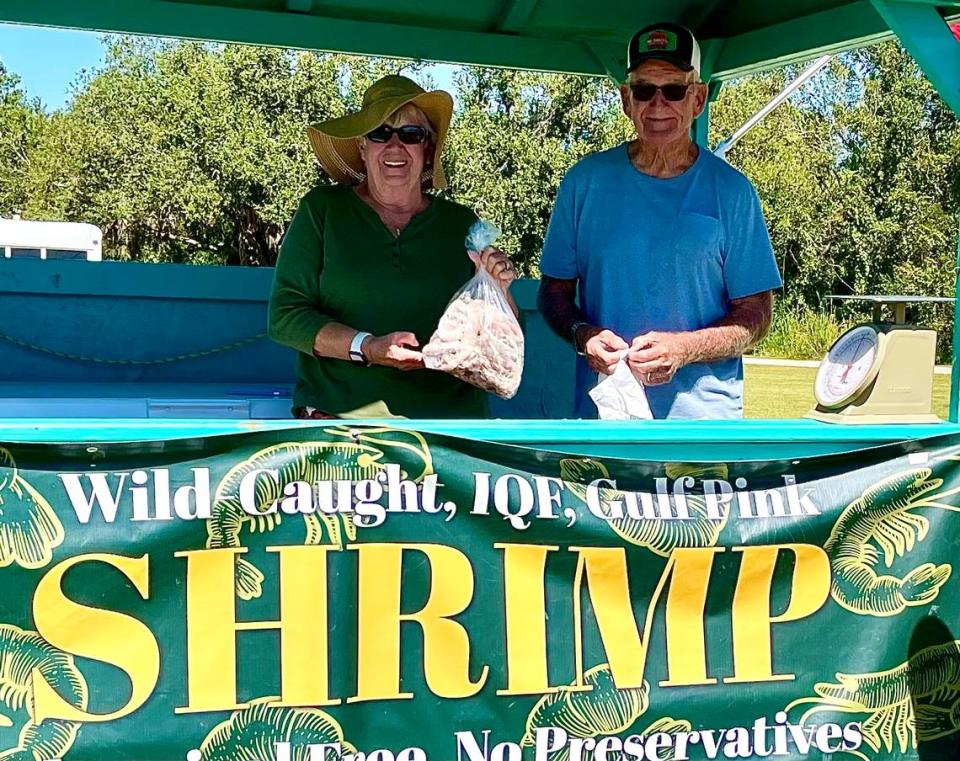
Sales have been pretty good, said Shirley Driggers, who is in her seventies. “But I don’t know how many times we’ve said to each other, ‘Would you have ever imagined we’d be selling shrimp by the side of the road at our age?’” Jimmy Driggers is 86.
As many people like the Driggers have discovered, Florida residents are often just one bad storm from economic disaster.
Insurance settlements, in many cases, have been snail-like; some people just skipped insurance when premiums got too high -- and many are still going without insurance, home repair costs are high and government programs have been slow to kick in. Homes on some of the hard-hit barrier islands off the Gulf Coast don’t look that much different from the days after Ian hit.
With such scenarios in mind, the Miami Foundation started a revolving Disaster Resilience Fund last year. “Every year at the start of the hurricane season, we send proactive supplies to a wide network of readiness partners, and we make sure they’re fully stocked with emergency supplies before any potential storm,” said Fishman Lipsey. “It’s something I’m very passionate about.”
Right now, Fishman Lipsey, said the Miami Foundation is concentrating on Give Miami Day on Nov. 16. More than 1,000 nonprofits will be fundraising and telling their stories online during the 24-hour giving campaign.
The Miami Foundation has been working for months with nonprofits to help them hone their online messages and fundraising techniques for Give Miami Day. Fishman-Lipsey calls the event the “most important day of the year for generosity in Miami.”

